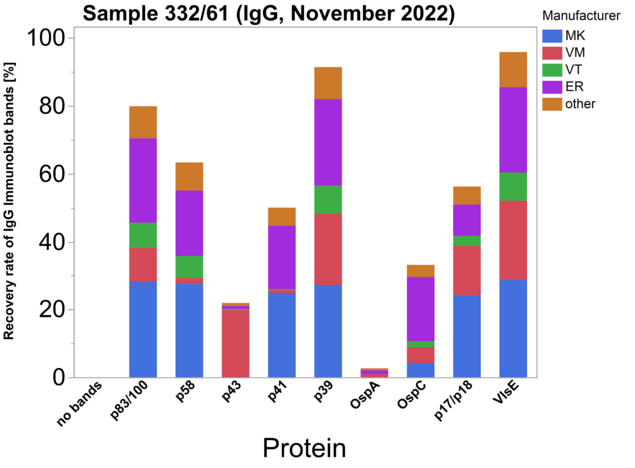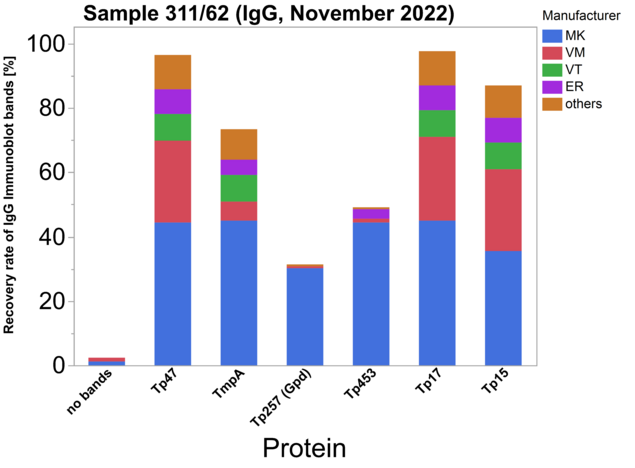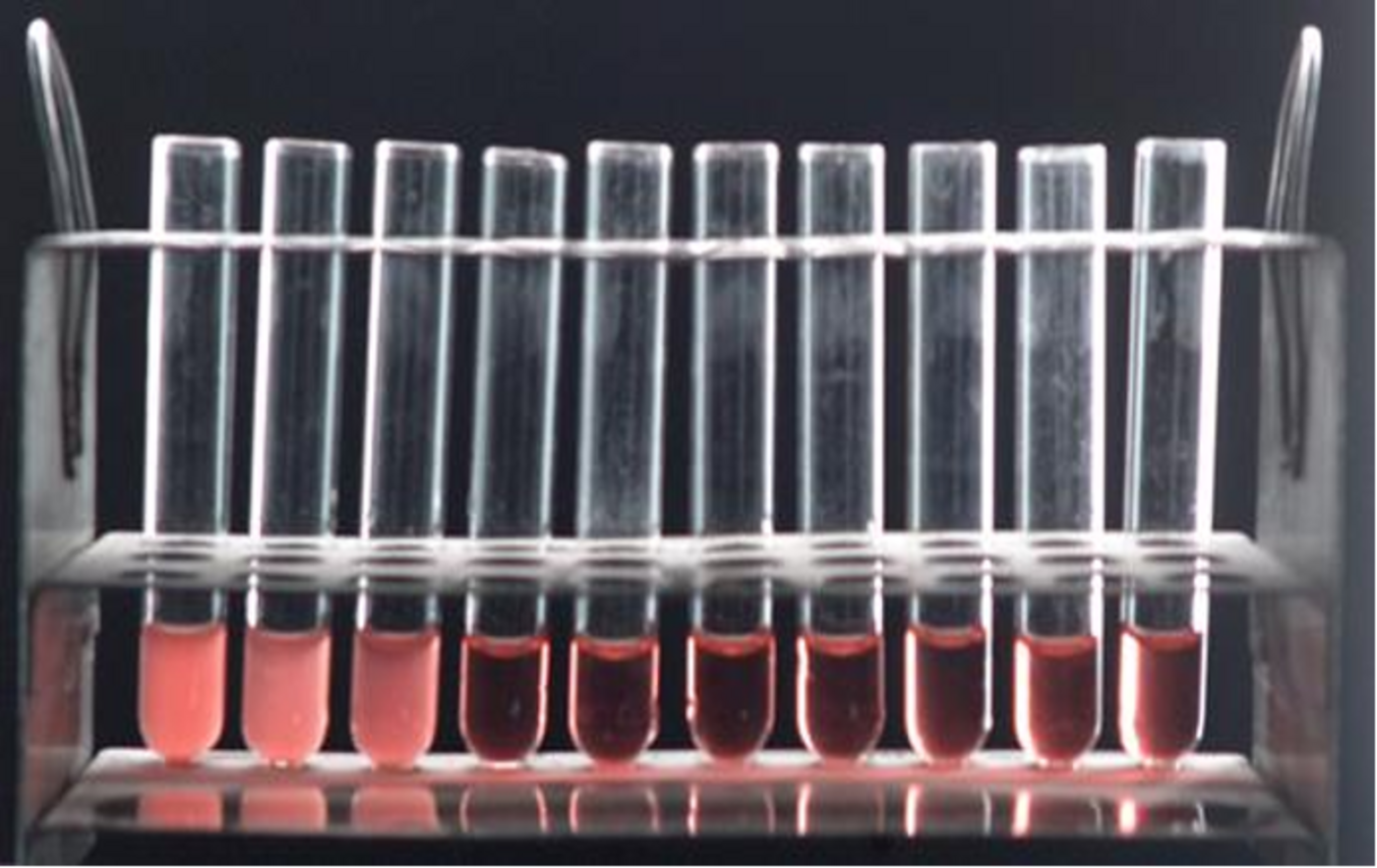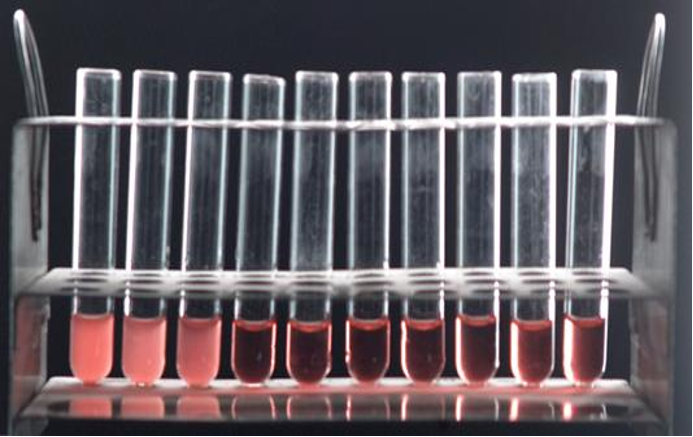by Prof. Dr. med. K.-P. Hunfeld: INSTAND e.V. Board - Vice President & EQAS Expert
Central Institute of Laboratory Medicine, Microbiology and Hospital Hygiene, Northwest Hospital, Frankfurt am Main
Since the introduction of Koch's postulates in microbiological diagnostics in 1882, the direct detection of pathogens has been considered the gold standard in diagnosing infectious diseases. With the discovery of the Gruber-Widal reaction about 150 years ago (Fig. 1), infection serological pathogen diagnostics was also established. Today, many different serological test methods for the indirect detection of bacteria and viruses are established in routine microbiological laboratories. The Viennese scientist Max von Gruber first used the serological detection of antibodies from sera of infected animals and patients by agglutination of Salmonella Typhi and Vibrio cholerae bacteria to diagnose infectious diseases. The same observation was independently described later by Fernand Widal in 1897. Since then, the detection of pathogen-specific antibodies by immunological methods has remained an essential pillar for diagnosing pathogens from blood and CSF, despite the significant progress of modern molecular biological assays for direct pathogen detection.
Figure 1: Gruber-Widal reaction in the tube
(Source: http://old-www.path.cam.ac.uk/Immunology/I_07.jpg)
In addition to the fundamental medical historical significance of this discovery, the so-called Gruber-Widal reaction is still used today in infection diagnostics, particularly for diagnosing secondary diseases, typhoid fever, and yersiniosis. Another groundbreaking discovery was the development of the complement fixation reaction by Bordé and Gengou in 1901. Although today complement fixation reactions are generally no longer considered accreditable, they still represent a helpfully established method in many laboratories worldwide, especially for diagnosing infections caused by rare and difficult-to-cultivate pathogens by relatively simple means. The further development of this method by August Paul von Wassermann and its adaptation in 1906 as a rapid and widely available technique for the diagnosis of syphilis also counts among the milestones in establishing infection serological tests in the clinical laboratory.
Even if such techniques are today primarily of medical-historical importance, the partially or fully automated immunological test methods developed in their succession are still indispensable today for the detection of pathogen-specific antibodies and antigens in the medical laboratory. These methods use a variety of modifications of antigen and antibody reactions with the aid of a wide range of reagents and techniques, and their worldwide presence and availability represent a very lucrative market for the diagnostics industry. However, despite all efforts towards standardization, these methods are still of very different quality and reliability, especially regarding reliable diagnostics of infectious diseases. The clinical diagnostic requirement to prove or exclude specific infectious disease patterns using these diagnostic techniques remains a major challenge as far as a transparent information policy regarding the specificity and sensitivity of these test systems is concerned.
From the published international literature on the quality of bacteriological infectious serology, it is clear that, despite many efforts, significant problems with test standardization persist, and there is, thus, still a need for better comparability of test results for a wide variety of pathogens. The indirect diagnosis of bacterial pathogens by serological assays has the advantage that an immune response can also be detected against microorganisms that are difficult to cultivate or slow-growing and can hardly be detected by culture or molecular methods. However, due to the variability of the test results, especially at the beginning of the symptoms or in the course of monitoring, it is difficult to achieve good comparable significant test value changes with the different test systems. Also, especially with these pathogens, the findings are still negative in the early phase of infection. A positive detection clearly confirms that an immunological confrontation with the corresponding pathogen has occurred in the host organism. However, in many cases, it must remain open whether this is actually an acute infection or, as is frequently observed, a disease that has been passed through with a serological residual response (persistent antibodies). In the same way, clear statements on the need for treatment or the success of therapy can rarely be derived from serological results alone.
In the vital indication fields of bacteriological infectious serology, such as the diagnosis of syphilis or Lyme borreliosis, the limitations mentioned above cannot usually be resolved even by the application of modern culture and PCR methods. This is because even for these methods, especially molecular biological methods, there are still significant problems with the sensitivity of the detection methods, depending on the pathogen and the manifestation. This is even more true for many of the difficult-to-detect pathogens in parasitology, mycology, and virology, so in many routine diagnostic medical laboratories, infection immunological detection methods are currently without alternatives. The frequently reported poor quality and poor comparability of immunodiagnostic assays for microbiological pathogen detection results, not unexpectedly, from insufficient regulatory efforts by regulatory agencies in recent years. The newly issued IVDR attempts to counteract this but overshoots the mark due to the now ambitious expectations and requirements for diagnostics approved for the European market. Many manufacturers of commercial assays fear the high regulatory burden and the not inconsiderable investments required for the approval of assays, especially for rare or difficult-to-diagnose pathogens. Under the pressure of the new regulatory requirements, a whole range of previously available diagnostics have been withdrawn from the market. This problem, including the poor or not transparently evaluated quality of infectious serological and, here, in particular, bacteriological-infectious serological test systems, underlines the urgent need and the great importance of external quality control within the framework of the regular interlaboratory comparisons and similar measures prescribed by the guideline of the German Medical Association (RiliBäk). This includes an independent evaluation of tests beyond the repertoire of parameters mapped in the RiliBäk in E2. Without appropriate interlaboratory comparisons and their transparent evaluation and publication (Figs. 2 and 3), a reasonable selection of assays in the routine laboratory and an assessment of their diagnostic quality is practically impossible. Nevertheless, it is essential that, even under the influence of the new IVDR, assays approved in the future are better evaluated clinically and put through their paces in larger-scale pivotal studies before they are then launched on the European market. The coordinated and joint implementation of external quality assurance and good clinical evaluation must go hand in hand to achieve significant improvements in diagnostic quality, the comparability of tests, and the assessment and significance of test results in everyday clinical practice in the future.


Figure 2 and 3
Literature:
Wellinghausen N, Abele-Horn M, Donoso Mantke O, Enders M, Fingerle V, Gärtner B, Hagedorn J, Rabenau H F, Reiter-Owona I, Tintelnot K, Weig M, Zeichhardt H, Hunfeld KP. (2018) MiQ, Immunological Methods for the Detection of Infectious Diseases. INSTAND e.V., Düsseldorf in Kooperation mit dem Dustri-Verlag Dr. Karl Feistle, Oberhaching, ISBN 978-3-87185-518-4.
Wellinghausen N, Abele-Horn M, Donoso Mantke O, Enders M, Fingerle V, Gärtner B, Hagedorn J, Rabenau H F, Reiter-Owona I, Tintelnot K, Weig M, Zeichhardt H, Hunfeld KP. (2016) MiQ 35, Qualitätsstandards in der mikrobiologisch-infektiologischen Diagnostik: Infektionsimmunologische Methoden. Urban & Fischer München, Jena.


